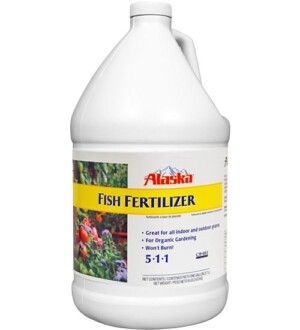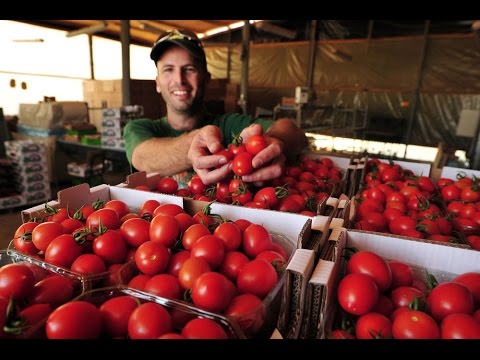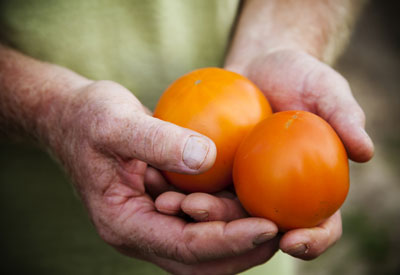[ad_1]
Your nice Planet Pure blogger, always hungry to review cooking, observed the Dan Barber installment of the model new Netflix documentary sequence Chef’s Desk. The sequence profiles a definite, high-profile restaurant chef each of its six episodes. Barber, a long-time champion of the farm-to-table, sustainable-agriculture movement, is the co-owner and authorities chef at New York Metropolis’s Blue Hill, an upscale restaurant with a sister location inside the nation, Blue Hill at Stone Barns, 30 miles north.
The interviews inside the documentary make it clear that Barber is solidly behind pure rising and for the entire anticipated causes. Nevertheless he doesn’t dwell on the dangers provided by conventionally grown crops or the amount of chemical compounds and pesticides poured into the environment, although that can get talked about too. Instead he talks regarding the significance of soil to style.
He’s a chef, in any case.

IT’S ORGANIC!
Alaska Fish (5-1-1)
An all-purpose, deodorized fish emulsion for use on all indoor and outdoors vegetation.
Examine additional
OMRI Listed for use in pure gardening! Alaska® Fish Fertilizer has been spherical for years and is probably going one of many best all-purpose nutritional vitamins for vegetation. Rich in pure matter, it breaks down slowly to feed vegetation — and soil microbes — over time. Good for lawns too!
Nevertheless he discover out about rising, too. Barber notes that the responsibility of pure farming is returning fertility to soil with out using chemical compounds. He encourages making a energetic group of soil microbes:
“… that may lastly translate into your tasting one factor [more] delicious than a plant grown in denuded soil, than chemical compounds … the additional life there’s inside the soil, the additional potential you’ll have for creation of style.”
In a world the place the usual vs. organically grown fruit-and-vegetable controversy is narrowly focused on whether or not or not or not pure produce is de facto additional healthful for you, it’s refreshing to see plenty of the myriad completely different causes for pure rising get some consideration.
Residence gardeners know best how superior, say, a homegrown tomato is to 1 purchased on the grocery or served at most consuming locations. Freshness, actually, is one problem. No grocery retailer tomato, regardless of how fastidiously grown, goes to model practically nearly as good after a pair days supply and sitting on present, as a result of the one you pull from a vine on a warmth summer season’s day and slice immediately.
You’re invested in your home-grown tomato. Your tomato grew the place you positioned it, the place you made sure the soil pH was glorious and that a great deal of pure supplies was labored in. You made sure the NPK ratio was balanced merely the way in which during which tomatoes want it and in addition you timed your pure fertilizer boosts merely when it might be best utilized.
When the fruits started to swell and shade, you made sure the vegetation have been staked successfully enough to assist their heavy load.
And it’s not that pure produce merely tastes larger. It tastes distinctive. It shows the soil by means of which it was grown, lending a attribute, outlined by a time interval first hooked as much as wines nevertheless now hooked as much as the whole thing from sweet corn to goat cheese: terroir.
Terroir — makes you contemplate “territory,” doesn’t it? — is the impression geology, native climate, and most importantly, soil parts play inside the style of what’s grown there. The impression strikes up the meals chain. The native grass and grain fed the goats and cattle make for delicate, delicious regional variations of their meat and milk and cheeses.


How is that this mirrored? Inside the richness and shade of the meat’s fat and the milk’s cream, inside the delicate, grassy finish that current farm milk has. In fruits, it’s mirrored inside the traits of their sweetness. In greens, terroir comes through in texture and character of style. Eggplant, picked out of your yard at its peak, is seldom bitter like the sort from the grocery retailer.
That’s the terroir we’re all most conscious of: our dwelling gardens. We model it inside the sweetness of the winter squash we develop, the crispness of the heirloom lettuce, the excellence in model between bush and pole beans. As Barber suggests, this frequent, even mystical concept of terroir, is being understood in the case of soil and the amount of life it harbors.
Scientists, too, are discovering that it’s all regarding the microbes. Soil is alive.
That, together with model, is another reason we embrace pure rising: to protect and protect our agricultural soil. A United Nations analysis not too way back found {{that a}} third of the world’s soils have been degraded from chemical pesticides and fertilizers. Erosion from extreme oil use farming practices is predicted to take half the world’s prime soil inside the subsequent 60 years.
The steps needed to keep away from losing our soils are the an identical steps that give us larger greens. That looks like a win-win.
Barber himself is invested inside the agricultural movement through his Stone Barns Coronary heart For Meals & Agriculture, a non-profit, working farm and coaching center devoted to sustainable rising. You’re invested, too, whilst you develop your private greens inside the yard. Few of us can spare the expense of a go to to Manhattan and a meal at Barber’s Blue Hill. Nevertheless everyone knows the flavour of a wonderful tomato, one we grew ourselves. And that’s priceless.
[ad_2]
Provide hyperlink
